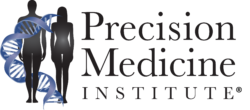Editor’s note: For up-to-the minute insights from the nation’s first movers and early adopters in the field of precision medicine, the Precision Medicine Institute Symposium 2019 is taking place Thursday and Friday, May 2-3, at the Sheraton Hotel in New Orleans. Visit https://www.precisionmedicineforhospitals.com to learn more and to register.
A world in which physicians know what drugs may work effectively, adversely, or not at all for individual patients—in advance of needing to write prescriptions—may be closer than you think.
The type of precision medicine that makes this opportunity possible is called pharmacogenomics, defined by the National Human Genome Research Institute as the discipline of using information about a person’s genome to choose the drugs and drug doses that are likely to work best for a particular person. This field combines the science of how drugs work, known as pharmacology, with the science of the human genome, or genomics.
Although barriers to implementing this type of personalized medicine exist, its potential to improve healthcare is vast, says Richard Weinshilboum, MD, a professor of pharmacology and medicine at the Mayo Clinic in Rochester, MN.
“There’s an understanding that using clinical genomics to help individualize drug therapy to avoid adverse drug reactions and to maximize drug efficacy is a concept that the industry recognizes is part of the future—and for many of us it’s rapidly becoming part of the present,” Weinshilboum says. “I think it’s fair to say that pharmacogenomics is the aspect of clinical genomics that will touch the most patients the soonest, and eventually will touch every patient everywhere.”
Pharmacogenomics at the Point of Care
At the Mayo Clinic, 10,000 patients have had sequencing conducted for all the common pharmacogenetics genes. Launched in 2016, the effort is known as the RIGHT 10K Study. Data gathered is included in each patient’s electronic health record (EHR) and is available to all Mayo physicians at the point of care. Because a person’s genetic makeup does not change, this data can used proactively as a tool for healthcare decision-making through a patient’s lifetime.
In contrast, most of today’s pharmacogenomics testing occurs in a reactive manner, after a patient is diagnosed with a condition that can be treated with medication. In the future, preemptive sequencing to help prevent unfavorable drug-gene interactions will become the standard of care, Weinshilboum predicts.

Caption: Richard Weinshilboum, MD, studies pharmacogenomics—the role of inheritance and individual variation in DNA sequence or structure in drug response. The goal is to develop safer and more effective drug therapy to treat diseases ranging from cancer to depression.
“[With this model], if a physician starts to write a prescription for one of the drugs that can be affected by the 77 genes that have been sequenced, he or she will immediately get an alert,” Weinshilboum says. This clinical-decision alert will warn the prescriber that the patient has genetic variants that could cause the medication to harm the patient or not achieve the desired therapeutic efficacy, he explains.
For example, a physician treating a patient for high cholesterol would receive an alert if the patient has the specific gene variant associated with a risk for statin-induced myopathy. “That’s where the future is going,” Weinshilboum says.
What’s more, Weinshilboum says it won’t be long before it becomes commonplace for machine learning and artificial intelligence (AI) to be used to develop algorithms that calculate the odds that a patient will or will not respond to a particular drug.
In fact, Mayo has conducted an AI study, funded by the National Institutes of Health and the National Science Foundation (PMID 30467458), revealing that genetic variant data, coupled with clinical information, could predict the effectiveness of selective serotonin reuptake inhibitors (SSRIs) with 80 to 90 percent accuracy. “If we just used clinical data, the algorithm would predict correctly only 55 percent of the time, which is hardly better than flipping a coin,” Weinshilboum says.
Proving Cost-Benefit
As compelling as such research may be from a clinical standpoint, the cost of sequencing, infrastructure, and physician education present significant obstacles to the widespread use of preventive pharmacogenomics, says Weinshilboum, admitting that implementing these elements for 10,000 patients constituted an expensive and substantial undertaking for Mayo. “It seemed that every day there was a different IT problem,” he adds.
Nonetheless, there’s a logical argument that mitigating the often-lengthy trial-and-error process of prescribing drugs with the most positive effect would save healthcare dollars over time. In hopes of proving the cost-benefit to insurers and reluctant healthcare executives, Mayo is currently conducting cost analysis of this investment in pharmacogenomics.
“We’ve done this because we think it’s in the best interest of our patients,” he says. “And because we’ve been doing pharmacogenetics at the Mayo Clinic for decades now.”
Looking forward, Weinshilboum says that within just five to 10 years, these screening practices will not only become the standard of care, but will lead to specific EHR alerts that advise the prescriber to raise or lower the dose of a medication, or prescribe an alternative.
“It sounds like a fairy tale, but it will come,” Weinshilboum says. “Eventually, the insurance companies will realize that they’re going to ultimately save money over time by virtue of optimizing the drug therapy of the patient.”
—Debra A. Shute
Related Information:
Richard Weinshilboum, MD, at the Mayo Clinic
Strategies for Innovators Pursuing Excellence in Clinical Care
